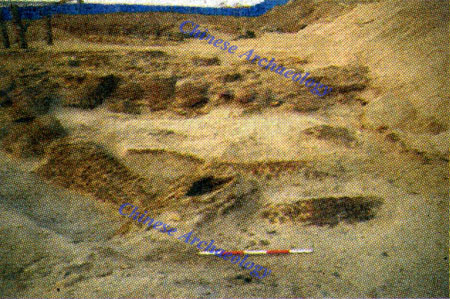New discoveries from the excavation of Wei Bridge Remains in Xi’an
From:Chinese Archaeology NetWriter:Date:2015-10-08
Wei Bridge Remains are located in the north side of Chang’an ancient City from Han Dynasty in the northern suburb of Xi’an, Shaan’xi Province. Several salvage excavations of the ChuChengmen bridge groups outside ChuChengmen gateway, which include No.1 Bridge, No.3 Bridge, No.4 Bridge and No.5 Bridge, and LuoChengmen Bridge outside LuoChengmen gateway and so on, have been carried out by Wei Bridge Archaeological Team which consists of Shaan’xi Provincial Institute of Archaeology, IA CASS (Institute of Archaeology, Chinese Academy of Social Sciences) and Xi’an Institute of Cultural Relics Protection and Archaeology since they were discovered in April, 2012.In 2014, main archaeological works of Wei Bridge were continuously concentrated in the area of ChuChengmen Bridge groups as follows: A number of pottery, porcelain, copper, iron and silver artifacts were unearthed from the 8th deposit layer of Weihe River course under the No.1 Bridge. Among them, copper coins are the mainstreams, most of which are “banliang”, “wuzhu”, “huoquan”, “daquanwushi”, “kaiyuan tongbao”. However, a certain kinds of coins from Song, Ming and Qing Dynasties were discovered, too. The above discoveries not only reveal that the date of the 8th deposit is not earlier than Qing Dynasty, but also show the fact that at least until Qianlong Period, the main river course of Wei river was within the range of the main excavation areas. Only in or after the time of Qianlong Period, Wei river moved to the north in a large scale.

north side of ChuChengmen No.1 Bridge excavation site
During the excavation, it’s the first time to find a rectangular stone construction part with several deity beasts reliefs on the same sculpture in the discovery of stone sculptures from Han Dynasty in Chang’an Region.The northern end of the Wei Bridge was identified in the excavation of T1. And near the northern end of the bridge, about 10m wide bank, which was constructed by bamboo baskets filled with tiles, stones as well as mugs and etc. from the north to the south was unearthed. Meanwhile, part of an ancient boat was discovered in the 8th deposit of the south bank. Besides, the discoveries of the bank, the end of the bridge as well as the ancient boat fill the gaps of the archaeology of Wei River in Chang’an area.
Small sized excavation of No.4 Bridge was undertaken, too. 41 bridge posts were cleared in the limited region, which covered an area of 250 square meters. According to these posts, the width between the bridge posts from the west end and east end is predicted to be about 15m.
A facility constructed by wood boards, lumbers and pebbles in the water was cleared in the south excavated area of No.5 Bridge in 2013. There are about 33m between the broken edge of the northern end and the broken edge of the southern end of pebble deposits found in 2013. According to the discovery, with a characteristic of pebble deposits, No.5 Bridge is totally different from No.1 Bridge of ChuChengmen Bridge, which was constructed by wood posts and beams. Therefore, the nature and function of No.5 Bridge are still under further investigations.

bank of Wei Bridge Remains
What’s more, no tenon and mortise joints have been preserved in the upper parts of upright and declining bridge posts in the excavation areas of the northern and southern ends of No.1 ChuChengmen Bridge (T1 and T3) . Obvious cut or saw marks were found on the top ends of the posts, which might imply that there was heavy man-made sabotage on these posts of Wei Bridge.
With the digging and excavation of Wei Bridge in 2014, it’s sure that at least five other large bridges are intensively distributed within the area where ChuChengmen No.1 Bridge situates in the center. It is of important value for the research on the transport network near Chang’an ancient City from Han and Tang Periods. Moreover, with the identification of the northern end of Wei Bridge and the northern bank of Wei River, exactly geographical coordinates of Wei River in Ancient Chang’an City are provided, which gives rare and precious materials for relevant studies on the changes of Wei River. (Translator: Ma Huanhuan)

